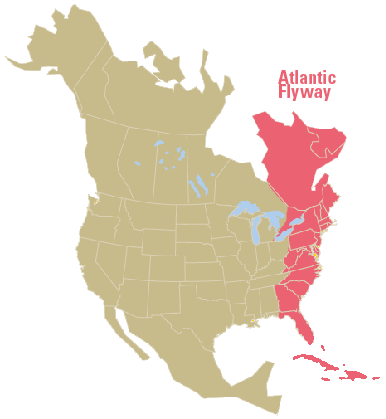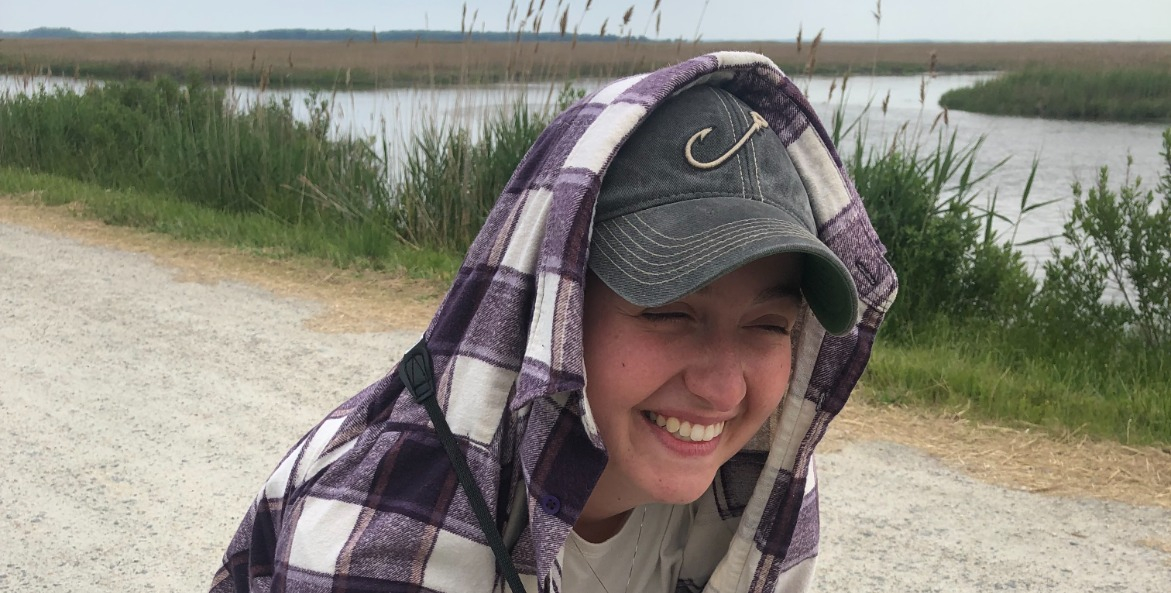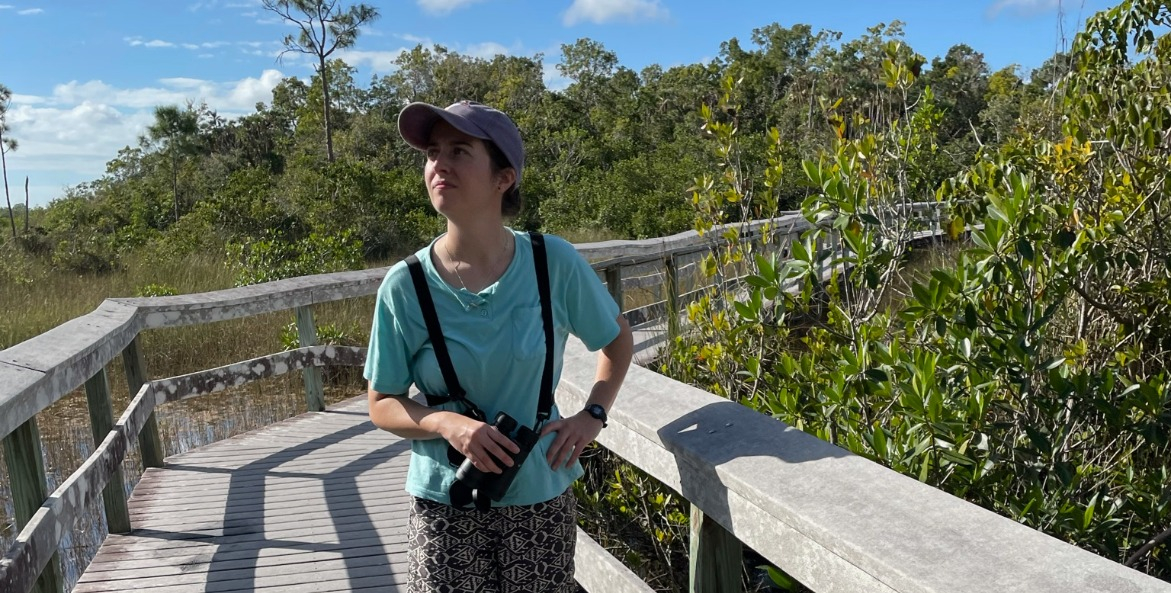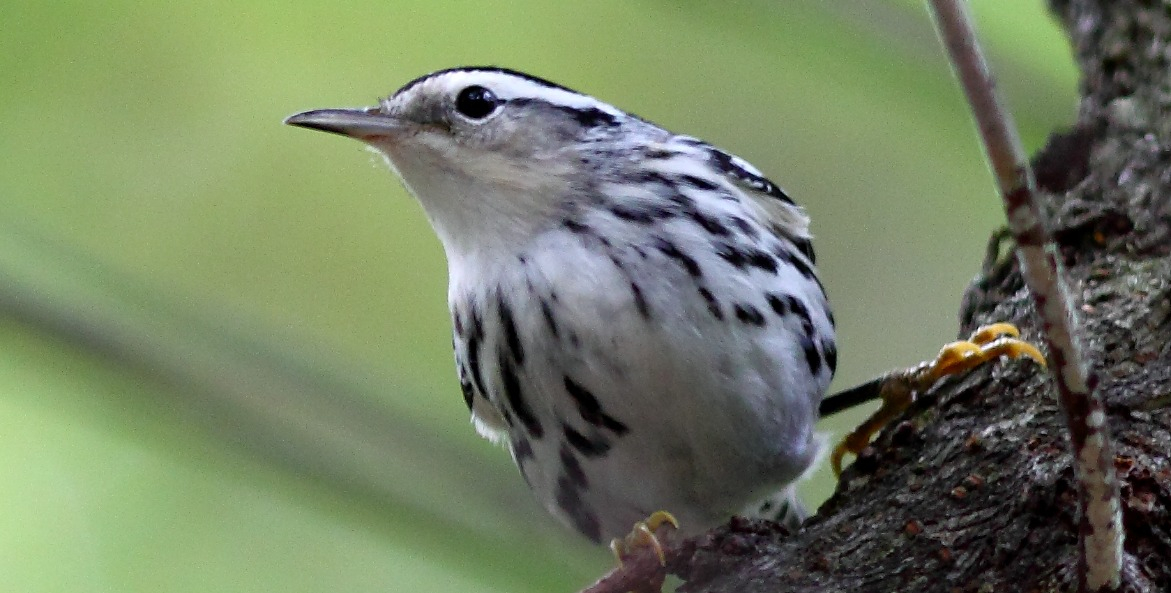Imagine sipping on your morning coffee, overlooking the Chesapeake Bay, when an exhausted black-and-white warbler lands on the railing. It looks up at you, seemingly jealous of the caffeine recharge. This interaction with one of the first migrating bird species of the fall season underscores just how magical a tidal island can be for birds and birding!

The Atlantic Flyway, a major bird migration route in North America.
USFWS
The Chesapeake lies in a huge, avian migratory corridor that spans the Eastern Seaboard. Called the Atlantic Flyway, hundreds of bird species travel up and down the region every year—not unlike I did a few years ago. As a 'juvenile' in my career, I flew south from central Pennsylvania to roost on the Eastern Shore of Virginia, where I was an environmental educator on the Atlantic side of the Delmarva Peninsula. I later migrated home to the Susquehanna River, and finally found my way back to the Chesapeake salt marshes at CBF's Karen Noonan Memorial Environmental Education Center (KNC) on Maryland's Eastern Shore.
Here, I manage education programs that take students into the marshes and onto the water to learn about the Bay and the critters that call it home. KNC is located in the middle of Blackwater National Wildlife Refuge, so I'm also immersed in a birding sweet spot. But you can enjoy birding wherever you are in the watershed. Here are a few tips to get started:

CBF Educator Shayla Keller tries to escape mosquitos at Bombay Hook National Wildlife Refuge. 'Birds over bugs' is a good mentality to hold while birding around the Chesapeake.
Paige Lauffer
Stopover Sites and Birdy Resources
Many migrating birds stop, rest, and refuel at unique places along their journey. A few good resources can help you fuel up on your birding knowledge, as well.
- The Cornell Lab is at the top of my recommendation list. Their Merlin Bird ID application is free to download, suggests likely birds based on your location, and can record and suggest bird IDs based on sound.
- I also encourage you to become a community scientist by using eBird to create checklists of birds you see. Check out hotspots near you, or follow along as we record data at KNC using the Bishops Head hotspot.
- Fall migration is in full swing, so check out BirdCast's live migration map tool to see where bird migration traffic is heaviest.

Bird songs and calls are one of the best ways to identify different species. Too bad instant replay isn’t available in nature.
Mike Kaiser
My Bird Nerd Accessories
Birding doesn't have to be an expensive hobby, but I am a fan of a few favorite accessories!
- I enter the field with my Merlin Bird ID app set to my current location and start an eBird checklist to record my route.
- I pair that with 8x42 binoculars.
- My favorite reference guide for identification is by Richard Crossley. It uses real images of each bird species in its habitat and shows multiple angles, plumage, sexes, and ages.
- At home, I also love to play the birding board game Wingspan, which helps share my passion for birds with friends and family!
- If you're just as excited for migration as I am, I also recommend grabbing a copy of my current read, A World on the Wing: The Global Odyssey of Migratory Birds by Scott Weindensaul.
If you'd like to learn more about birding, check out the tips and tricks shared by CBF Educator Tiffany Granberg in her video An Introduction to Backyard Birding.
Happy birding!
Shayla Keller, Karen Noonan Memorial Environmental Education Program Manager/Educator



